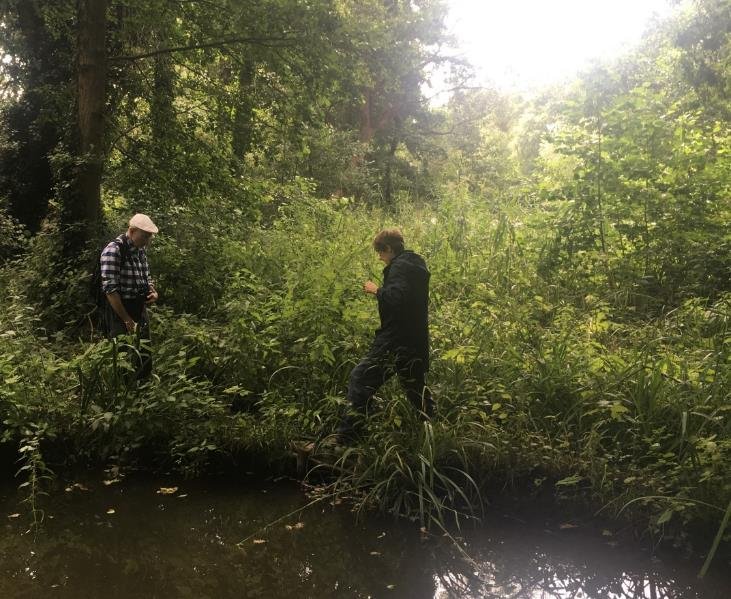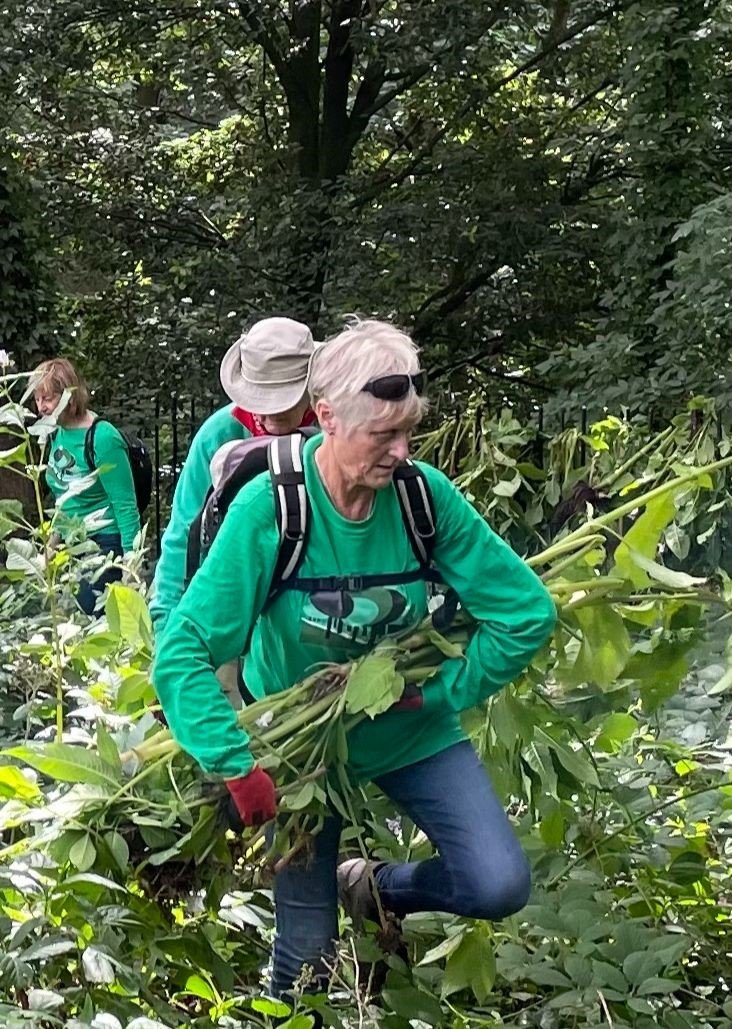Words on the Fleet
Did you know that London’s largest and most famous ‘lost river’, the Fleet begins its journey on Hampstead Heath? The Heath is one of two places the Fleet can still be seen above ground, where its headwaters begin as springs close to Highgate and Hampstead. Thanks to funding from Thames Water, Heath Hands has been organising a variety of activities linked to the Fleet and developing our efforts to conserve the stream and its wildlife.
View of the Viaduct bridge, with the Fleet stream feeding into the pond.
Meeting the Fleet
We’ve been leading several public walks to help people discover more about the Fleet. So far, these walks have focussed on the Hampstead tributary, running from the Vale of Health through the Hampstead pond chain. Our Assistant Ranger Jo Maddox has highlighted the history of the river, from the draining of swampy pools for desirable living places to its damming as reservoirs for London, revealing how much it has been shaped by human endeavours into the watercourse it is today. Some of our Heath Friendly Schools have been taking an even closer look at the Fleet and discovering the hidden creatures of the stream with stream dipping activities.
Fleet life
In feeding the Heath’s larger ponds and wet grasslands, the fleet provides a key habitat for wetland wildlife in London. This includes Central London’s closest population of Grass snakes. Being one of the top predators in this ecosystem (hunting amphibians that breed here) they are good indicator of the Fleet’s health. Thames Water funding has helped us continue efforts to survey them with our Wildlife Monitors and provided them with valuable breeding habitats. You too can help by adopting a snake home.
Wildlife Monitors on a survey in one of the Fleet’s enclosures.
The wetland habitats also need management to conserve them in the face of modern pressures. Some of the summer work of our Conservation Volunteers is dominated by pulling Himalayan balsam. This highly-invasive non-native plant would otherwise smother native bankside vegetation. Last year, our volunteers also mucked in with measures to reduce siltation of the Fleet, creating brush barriers on slopes to capture soil runoff and making ‘leaky dams’ of woody material to slow the flow and prevent silt being carried downstream. This will keep the waters clearer – much better for aquatic plants, invertebrates and resident Kingfishers.
Hampstead Heath Conservation
Conservation Volunteers clearing Himalayan Balsam
What next?
The Fleet is an environmental and cultural asset for the Heath and will not be lost here! We are currently developing a new webpage to host all the information we’ve discovered and our Wildlife Interpreters will be leading pondlife activities in April. Check our events page for details.







